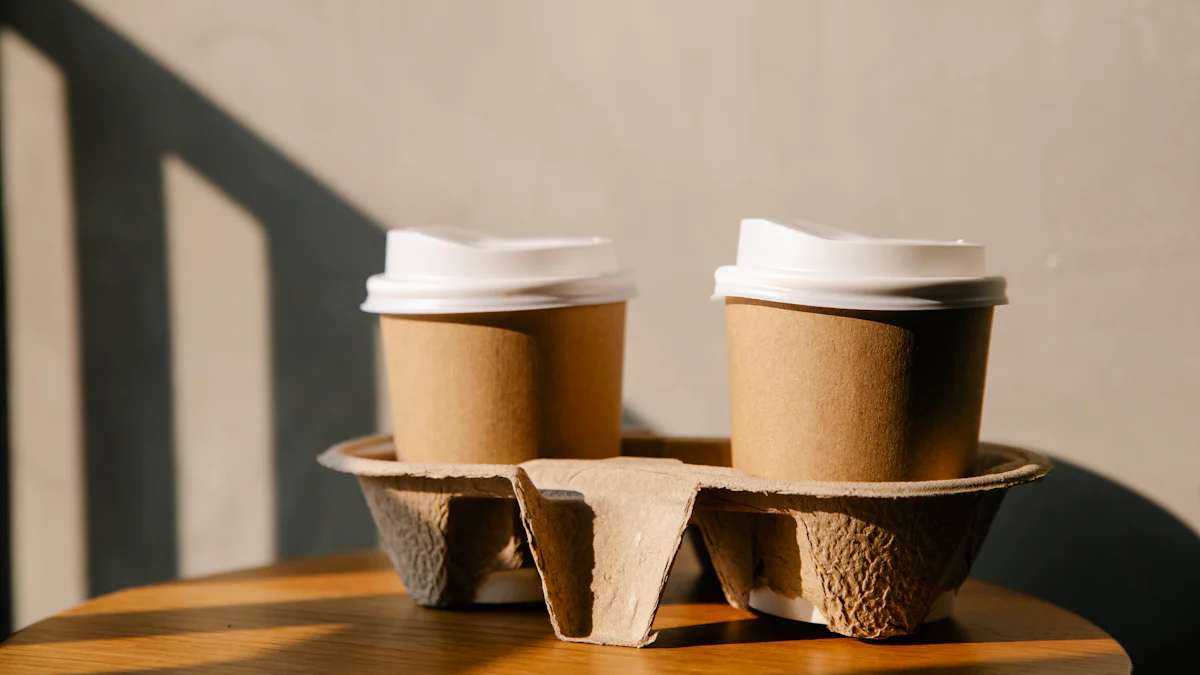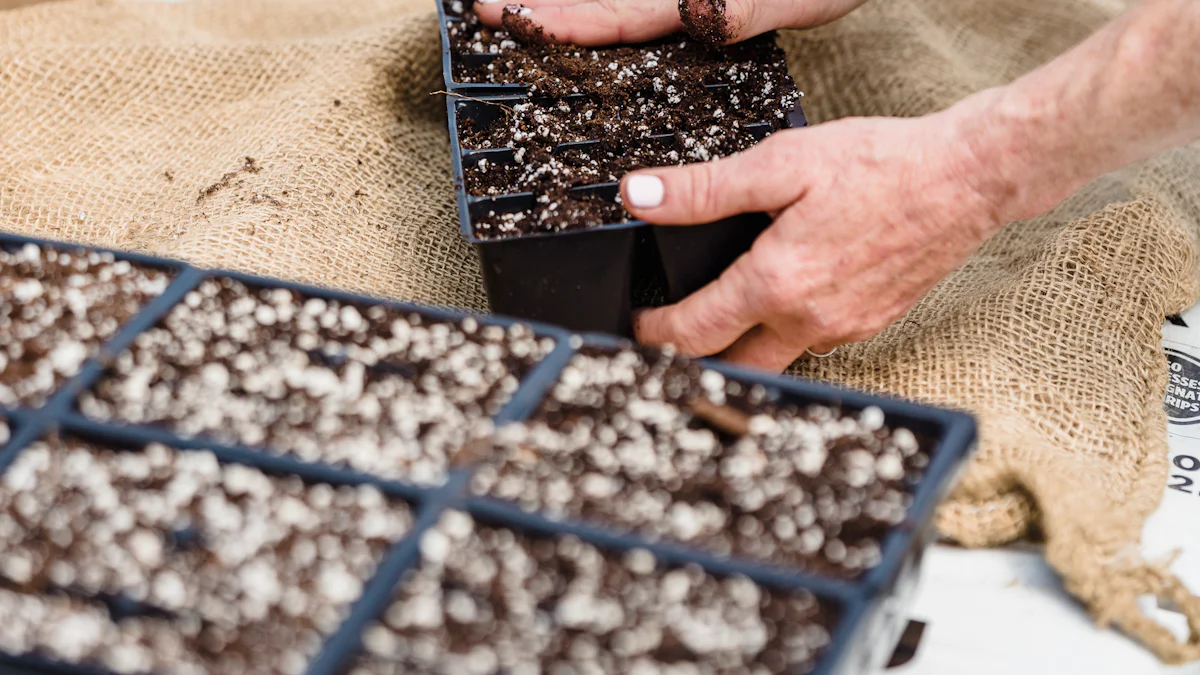
Plastic waste is choking our planet. Did you know whales are swallowing millions of plastic particles daily? Blue whales alone consume up to 4 metric tons during feeding season. This crisis demands action. That’s why I’m excited about biodegradable mushroom trays. They’re made from renewable resources and break down naturally, unlike plastic, which lingers for centuries. These trays don’t just reduce pollution—they align with global sustainability goals. Choosing biodegradable mushroom tray ECO products is a step toward a cleaner, greener future.
Key Takeaways
- Mushroom trays are biodegradable and made from natural materials like mycelium and farm waste. They are better for the planet than plastic.
- These trays decompose on their own, cutting down plastic trash. When composted, they improve soil health and help the environment.
- Using these trays can lower costs for businesses and buyers. It also helps local jobs and promotes eco-friendly habits.
Understanding Biodegradable Mushroom Tray ECO
What Are Biodegradable Mushroom Trays?
Let me tell you about biodegradable mushroom trays. These trays are made from mycelium, which is the root structure of fungi. Mycelium acts as a natural binding agent, holding everything together. But that’s not all. Agricultural waste like corn stalks, straw, and sawdust is also used. This waste is cleaned and sterilized, creating the perfect base for mycelium to grow.
What makes these trays so special? First, they’re biodegradable. That means they break down naturally, unlike plastic, which can stick around for hundreds of years. Second, they’re lightweight yet durable, making them practical for packaging. They even have excellent insulation and flame-resistant properties. Pretty cool, right?
By using renewable materials, biodegradable mushroom tray ECO products reduce waste and energy consumption. They’re a sustainable alternative to traditional packaging, which relies on petroleum-based materials.
How Are They Made?
The process of making these trays is fascinating. It starts with agricultural waste. This waste is cleaned and sterilized to remove impurities. Then, mycelium spores are added to the mix. The mycelium grows, bonding the particles together.
Next, the mixture is placed into molds. These molds shape the material into trays or other packaging forms. Over several days, the mycelium fills the mold, creating a solid structure. Finally, the trays are removed and dried. Drying stops further growth and ensures the trays are lightweight and biodegradable.
This process uses less energy and creates less waste compared to plastic production. It’s a win for the planet and a step toward sustainable living.
Environmental Benefits of Biodegradable Mushroom Tray ECO

Reducing Plastic Waste and Landfill Overload
Plastic waste is everywhere. It’s in our oceans, landfills, and even the air we breathe. I’ve seen how single-use plastics pile up, creating mountains of trash that take centuries to decompose. That’s where biodegradable mushroom tray ECO products come in. These trays break down naturally, leaving no harmful residue behind. Unlike plastic, they don’t sit in landfills for hundreds of years. Instead, they return to the earth, completing a natural cycle. By switching to these trays, we can cut down on plastic waste and reduce the pressure on overflowing landfills.
Compostability and Contribution to Soil Health
Here’s something amazing about these trays—they’re compostable! When you toss them into a compost bin, they break down into nutrient-rich material. This compost can then be used to enrich soil, helping plants grow stronger and healthier. I love the idea of packaging that not only disappears but also gives back to the environment. Biodegradable mushroom tray ECO products do just that. They transform waste into something valuable, supporting a healthier planet.
Lower Energy and Resource Consumption in Production
Producing plastic takes a lot of energy and resources. It’s a process that relies heavily on fossil fuels. In contrast, making biodegradable mushroom tray ECO products uses less energy and fewer resources. The process relies on agricultural waste and mycelium, both renewable materials. This means a smaller carbon footprint and less strain on the planet’s resources. It’s a win-win for sustainability.
Economic and Practical Advantages of Biodegradable Mushroom Tray ECO
Cost-Effectiveness for Businesses and Consumers
Switching to biodegradable mushroom trays isn’t just good for the planet—it’s also smart for your wallet. Businesses can save money by reducing waste disposal costs. These trays decompose naturally, so there’s no need for expensive recycling processes. For consumers, the durability and reusability of these trays mean fewer replacements. That’s a win-win!
I’ve noticed that as demand for eco-friendly products grows, production costs are dropping. This makes biodegradable mushroom tray ECO products more affordable than ever. Plus, governments are offering incentives for businesses that adopt sustainable practices. Lower costs and financial perks make these trays an attractive option for everyone.
Versatility and Customization for Various Packaging Needs
One of the coolest things about these trays is their versatility. They work across so many industries! Food and beverage companies love them because they’re biodegradable and safe for the environment. Electronics manufacturers use them for their shock-absorbing and insulating properties. Even personal care brands are jumping on board, drawn to their eco-friendly appeal.
What’s more, these trays can be molded into almost any shape or size. This makes them perfect for tailored packaging solutions. Whether it’s a delicate electronic device or a sturdy food container, biodegradable mushroom trays get the job done. They’re proof that sustainability doesn’t mean sacrificing functionality.
Supporting Local and Sustainable Industries
These trays don’t just help the environment—they also boost local economies. Many packaging companies are shifting to eco-friendly solutions, creating jobs in sustainable industries. Farmers and agricultural sectors benefit too. They supply the agricultural waste used to make these trays, turning what was once trash into treasure.
By choosing biodegradable mushroom trays, we’re supporting a circular economy. Local businesses thrive, waste is reduced, and the planet gets a much-needed break. It’s a small change with a big impact.
Biodegradable Mushroom Tray ECO in the Context of 2025

Aligning with Circular Economy Principles
I love how biodegradable mushroom tray ECO products fit perfectly into the circular economy. They’re designed to reduce waste and keep materials in use for as long as possible. Here’s how they align with these principles:
- They cut down reliance on fossil fuels, conserving precious non-renewable resources.
- Their production process is energy-efficient and emits fewer greenhouse gases.
- They decompose naturally, helping reduce plastic pollution.
This approach creates a closed-loop system where waste becomes a resource. It’s a game-changer for sustainable living. By choosing these trays, we’re not just reducing waste—we’re actively participating in a system that prioritizes the planet’s health.
Meeting Consumer Demand for Eco-Friendly Products
In 2025, consumers are more eco-conscious than ever. I’ve noticed people are willing to pay extra for sustainable options. The demand for biodegradable packaging is skyrocketing, and biodegradable mushroom tray ECO products are leading the charge.
Take a look at this:
| Region | Growth Drivers |
|---|---|
| Europe & North America | Strict environmental regulations and high consumer awareness about sustainable products. |
| Asia Pacific | Rapid urbanization and growing environmental awareness. |
| Latin America & MEA | Increasing regulatory pressures and rising demand for sustainable alternatives. |
Consumers are also embracing trends like minimalist packaging and edible materials. These trays meet those needs while offering a practical, eco-friendly solution. It’s clear—they’re not just a trend; they’re the future.
Addressing Stricter Environmental Regulations and Policies
Governments worldwide are stepping up their fight against plastic pollution. I’ve seen how regulations like the EU’s Single-Use Plastics Directive are pushing industries to adopt biodegradable alternatives. This directive bans ten types of disposable plastic products, including food containers, and promotes sustainable materials.
Other countries are following suit, introducing policies to reduce plastic waste and encourage biodegradable packaging. These regulations create a sustainable supply chain and ensure businesses stay ahead of procurement challenges. Biodegradable mushroom trays are perfectly positioned to meet these requirements, making them a smart choice for companies looking to comply with stricter laws.
Biodegradable mushroom trays are game-changers for sustainable living. They’re made from renewable resources like agricultural waste and fungi, which means they’re eco-friendly and decompose naturally without leaving harmful residues. These trays reduce plastic waste, save energy, and support local industries. Let’s embrace them today and create a cleaner, greener world for tomorrow!
Post time: Jan-10-2025




